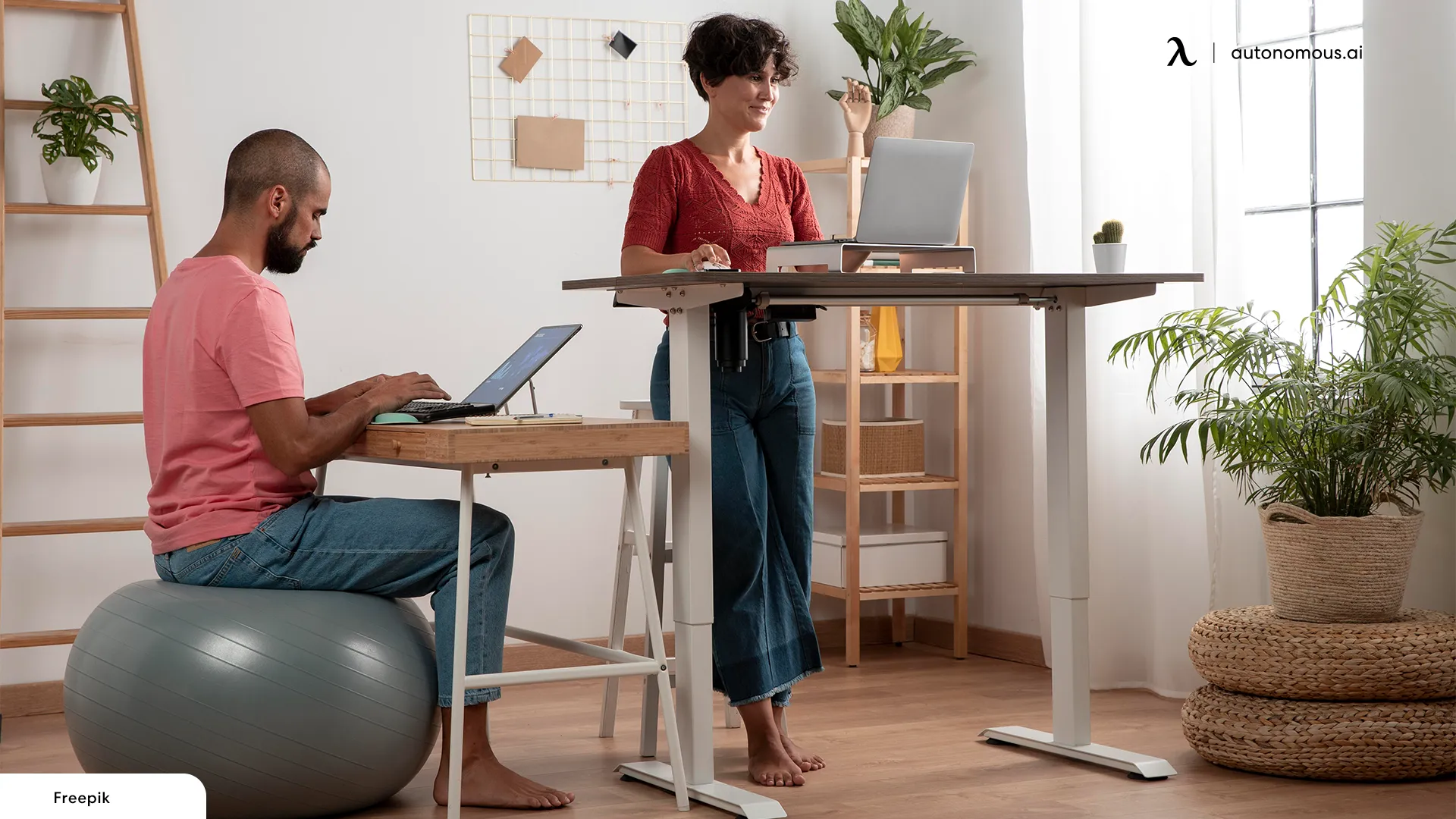
Debunking the Myth: Does Standing Count as Exercise?
Table of Contents
In recent years, the importance of regular exercise has become increasingly evident. While many of us strive to fit in a daily workout, others may be wondering if everyday activities like standing can be considered exercise. So, is standing an exercise? Is standing good exercise? In this blog, we'll delve into the physiology of standing, its effects on our health, and provide tips on how to make standing a more integral part of your daily routine.
The Physiology of Standing
When we stand, our bodies undergo a series of physiological changes that can have both short-term and long-term effects on our health. Standing engages multiple muscle groups, including our legs, core, and back muscles, which work together to maintain balance and stability. This increased muscle activity leads to improved blood flow and a boost in energy expenditure.
In the short term, standing can lead to a number of benefits, including:
- Increased caloric burn: Standing burns more calories than sitting, which can help with weight loss and management.
- Improved blood sugar regulation: Standing after meals has been shown to improve blood sugar regulation and reduce the risk of developing type 2 diabetes.
- Reduced back pain: Standing can help strengthen the muscles in our backs, which can lead to reduced back pain and improved posture.
In the long term, regular standing can lead to:
- Increased muscle strength: Standing can help build strength in our legs, core, and back muscles.
- Improved bone density: Weight-bearing exercise like standing can help improve bone density, reducing the risk of osteoporosis.
- Reduced risk of chronic disease: Regular standing has been shown to reduce the risk of chronic diseases like heart disease and certain types of cancer. Also, a study published in the American Journal of Preventive Medicine has linked prolonged sitting to obesity, heart disease, and type 2 diabetes, while regular standing intervals have been shown to mitigate some of these risks.

Is Standing an Exercise?
So, is standing considered an exercise? Exercise is generally defined as physical activity that elevates the heart rate, engages muscles, and improves endurance, strength, or flexibility. By this definition, standing alone doesn’t quite qualify as an exercise. While it does engage muscles and maintain circulation, it doesn’t typically reach the intensity required for cardiovascular or strength-training benefits.
However, standing does contribute to daily physical activity, which is an essential part of a healthy lifestyle. Adding movement, like shifting weight or incorporating simple stretches while standing, can increase the benefits. For people with limited mobility or those just beginning a fitness journey, standing can be a low-impact way to introduce more movement.
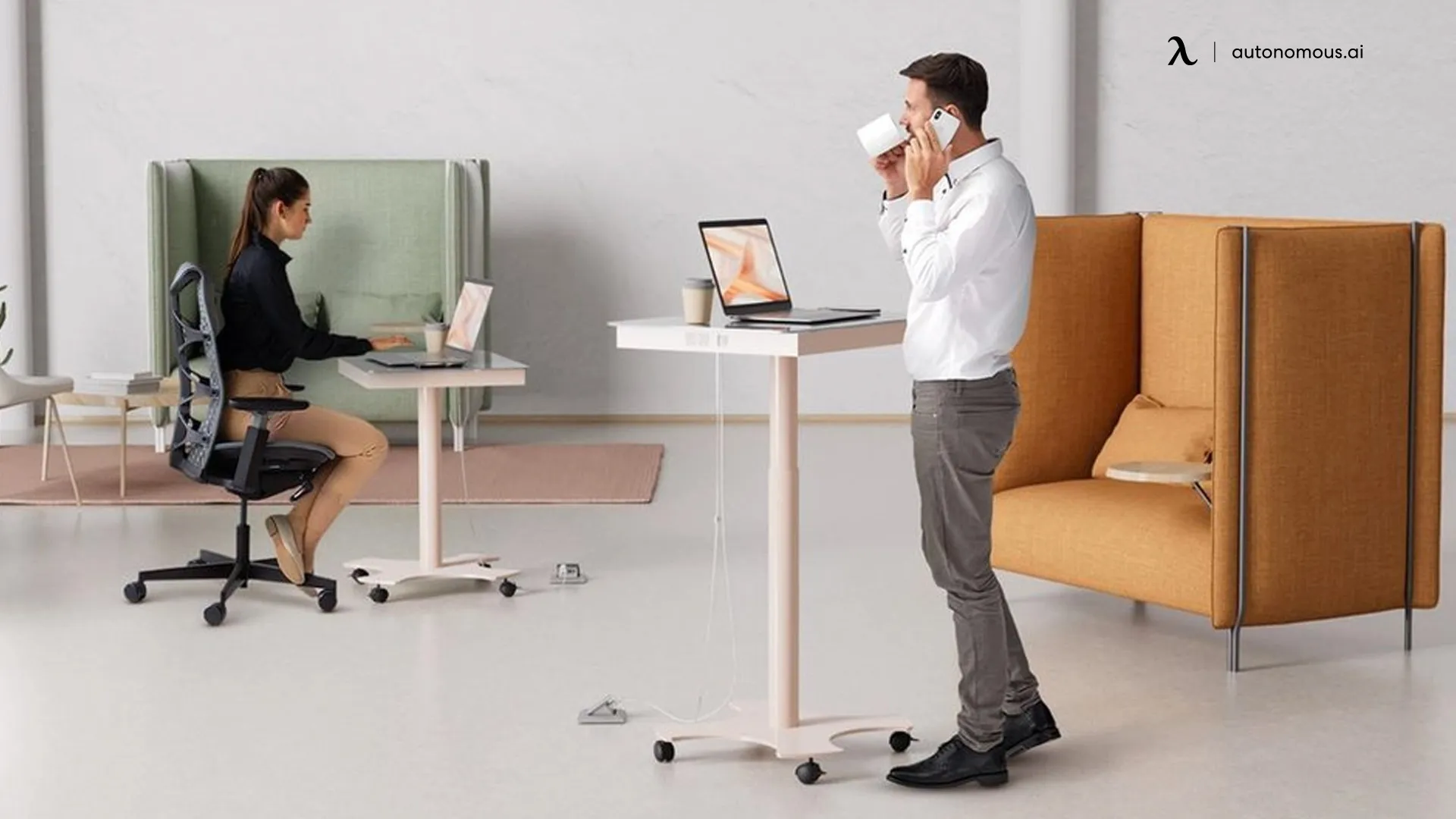
How Standing Can be a Form of Exercise
Though standing may not be a traditional workout, it has unique benefits that contribute to a more active lifestyle. Here’s how it serves as a stepping stone to better physical health:
1. Engages Core Muscles
While standing, your core muscles naturally engage to keep your torso upright. This is especially true if you practice good posture, with shoulders relaxed, back straight, and abdominal muscles slightly tightened. This continuous engagement may not match a full workout, but over time, it can help improve core stability and reduce the risk of back pain often associated with weak core muscles.
2. Improves Balance and Stability
Standing requires balance and coordination, particularly on surfaces that are less stable or when shifting from one foot to the other. Practicing balance while standing can improve stability, which is beneficial for joint health and reduces the likelihood of falls, especially in older adults. This effect can be enhanced by using balance boards or standing on soft anti-fatigue mats, which slightly increase the demand on stabilizing muscles.
3. Low-Impact, Accessible to Anyone
One of the most significant benefits of standing as a form of movement is that it’s accessible to almost everyone. Unlike high-impact exercises, standing is gentle on the joints and muscles, making it ideal for individuals who may not be able to engage in traditional workouts. For those new to fitness or recovering from an injury, standing can serve as an initial form of movement to increase stamina and improve circulation without strain.
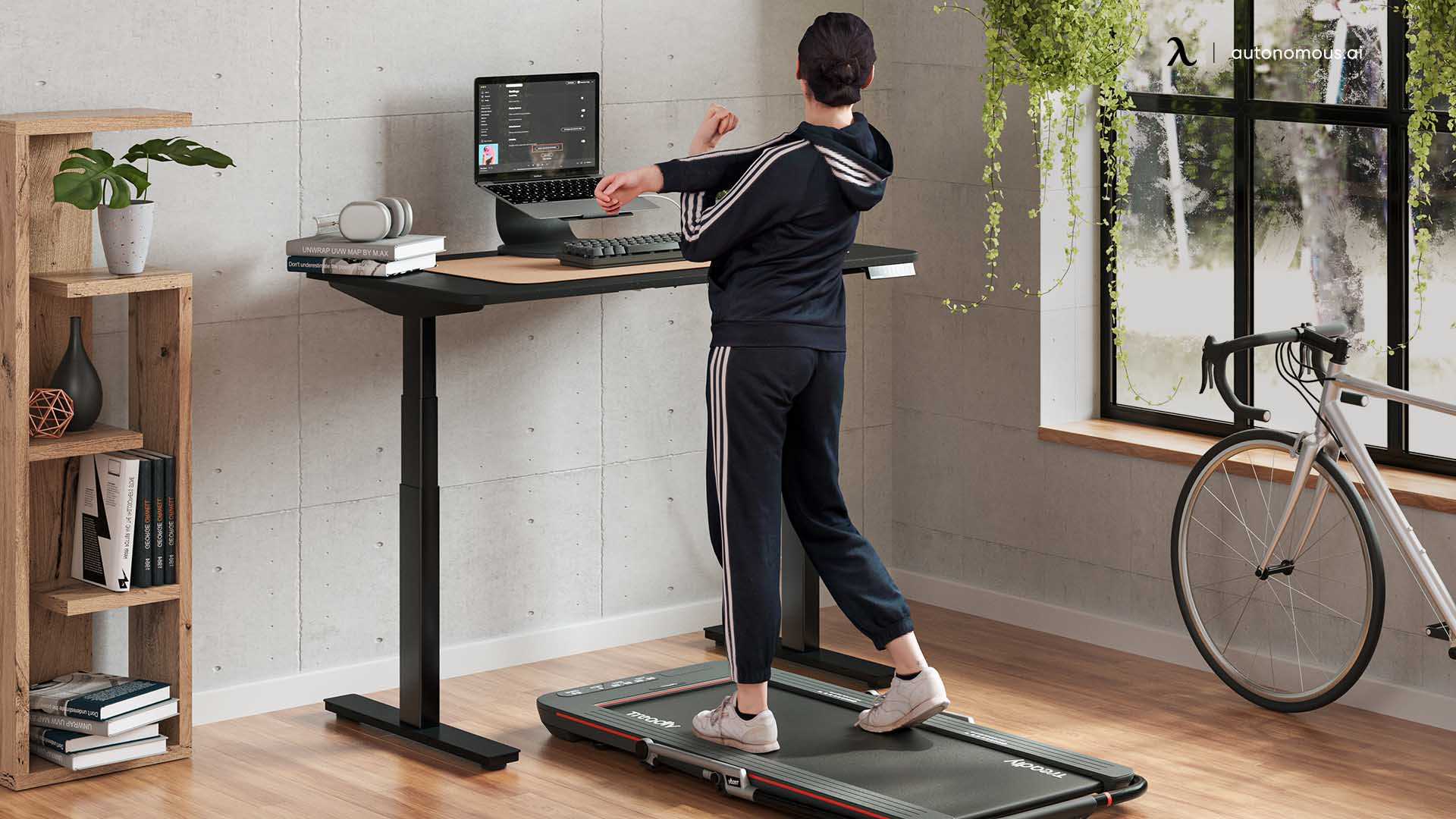
Tips for Replacing Sitting with Standing
Incorporating more standing into your routine doesn’t have to be a challenge. Here are some practical ways to start:
Start Small, with Short Periods of Standing
If you're new to standing for extended periods, begin by standing for just 5-10 minutes every hour. Over time, gradually increase this duration to suit your comfort level. Many people find that short standing intervals throughout the day make a noticeable difference in their energy levels and focus.
Incorporate Standing into Daily Activities
Consider standing during activities you usually do sitting down. For instance, stand while watching TV, talking on the phone, or reading. If you work from home, try standing during virtual meetings or brainstorming sessions. This simple adjustment can add minutes of standing throughout the day, with minimal effort.
Use a Standing Desk at Work
Switching to an adjustable standing desk at work is one of the most effective ways to replace sitting with standing. Not only does it make it easier to alternate between sitting and standing, but it also provides a designated space where standing feels natural and comfortable.

Invest in Autonomous SmartDesks to Stand More at Work
Autonomous SmartDesks are designed to help people stand more during work hours, making it easier to alternate between sitting and standing. These desks come with adjustable height features and sturdy designs, providing comfort and functionality for long hours of work.
Autonomous SmartDesk 2
.jpg)
Autonomous SmartDesk 2
| Top | Classic Top |
|---|---|
| Dimensions | 53"L x 29"W x 1"H |
| Shipping dimensions | 56"L x 33"W x 3"H x 47 lbs |
| Colors | White, Black, Walnut, White Oak, Bamboo |
| Material | Warp-proof MDF wood Natural Bamboo |
| Motor type | Dual | Dual |
|---|---|---|
| Lifting speed | 1.1”/sec | 2.3”/sec |
| Lifting capacity | 250 lbs | 310 lbs |
| Noise level | 45 dB | 40 dB |
| Height range (without top) | 27.2" - 46.5" | 25.2" - 51" |
| Height range (with top) | 28.3" - 47.5" | 26.2" - 52" |
| Length range | 39.8'' - 59'' | 40" - 73" |
| Frame foot width | 23.6'' | 27.5" |
| Material | SPCC steel | SPCC steel |
| Colors | White, Black | White, Black, Grey |
| Outlet voltage | 110-240V | 110-240V |
| Anti - collision | Yes | Yes |
| Shipping dimensions | 39"L x 11"W x 9"H x 51 lbs | 43"L x 13"W x 10"H x 70 lbs |
| Pros | Cons |
| Offers Standard (2-stage) and Max (3-stage) frames to suit different needs. | Standard model's height range may not suit very tall or short users. |
| Height range from 25.2" to 51" with memory settings. | Limited surface size (53"x29"). |
| Supports up to 310 lbs, ideal for heavy setups. | Assembly might be more complex and time-consuming |
| Quiet operation at 40-45 dB. | |
| Made with sustainable FSC-certified materials. | |
| Sturdy build: SPCC steel, ANSI/BIFMA certified. | |
| Anti-collision technology for safety. | |
| Quick assembly: 10-20 minutes. | |
| Warranty: 10 years on the frame, 1 year on the top. |
The Autonomous SmartDesk 2 is a versatile and budget-friendly option for those looking to invest in a quality smart desk. It features a dual-motor system that enables smooth height adjustment, supporting up to 265 lbs. The desk's wide height range, from 29.4” to 48”, makes it suitable for users of various heights. With programmable settings, the SmartDesk 2 allows users to set their preferred heights, making it easy to transition between sitting and standing.
Key Features:
- Dual-motor for smooth height adjustments
- Wide height range (26.2" - 52")
- Supports up to 310 lbs
- Programmable height settings
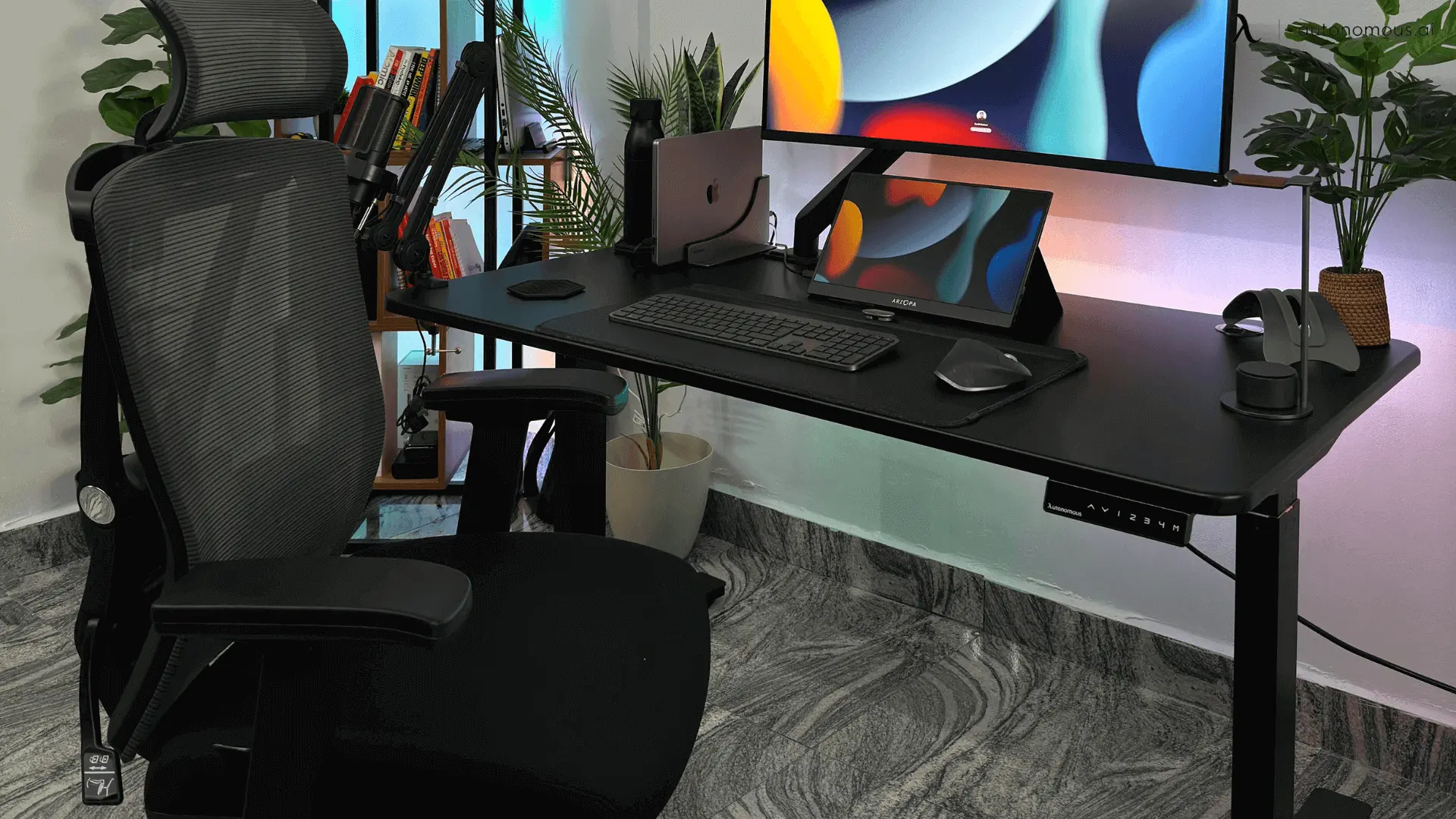
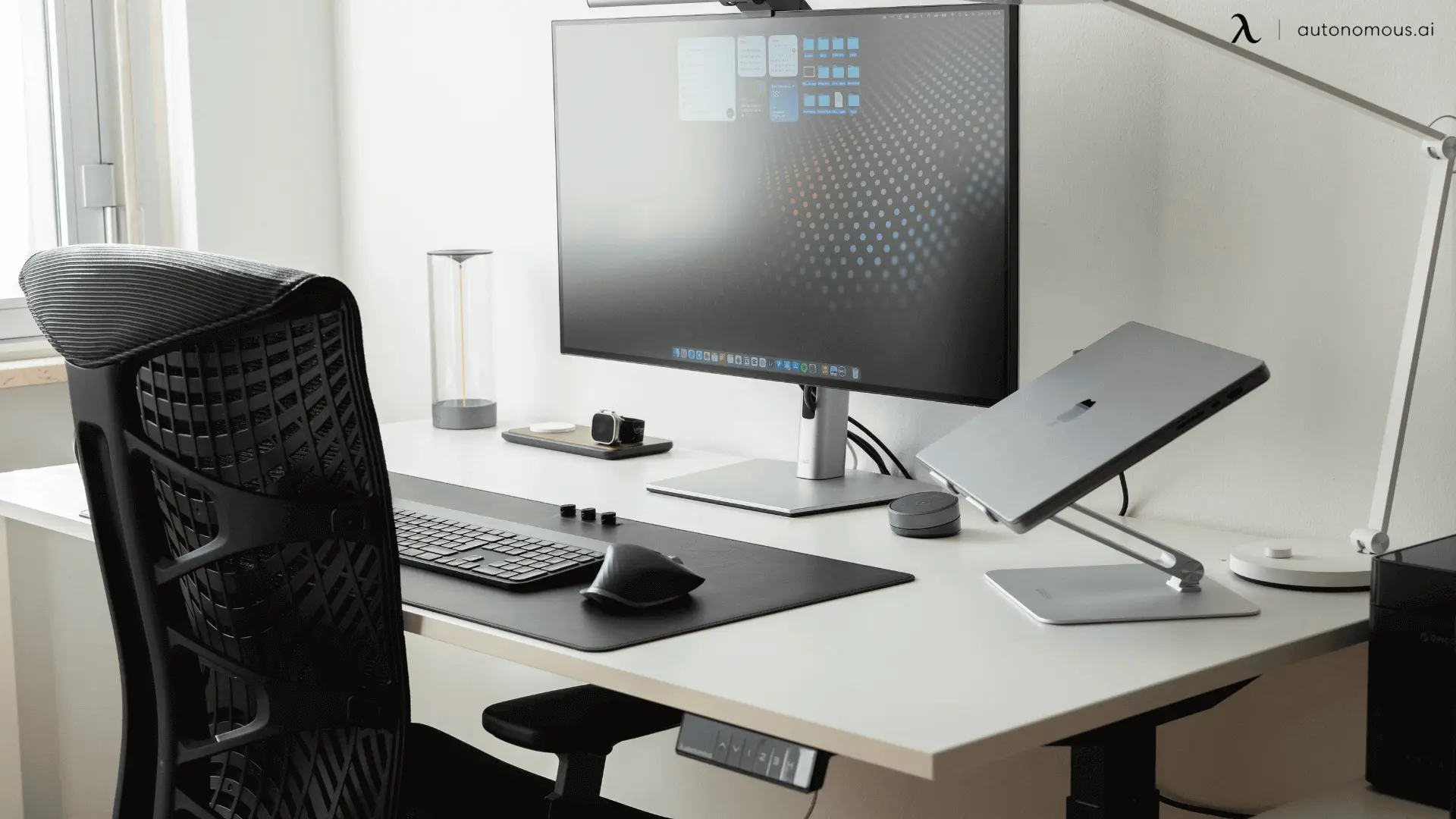
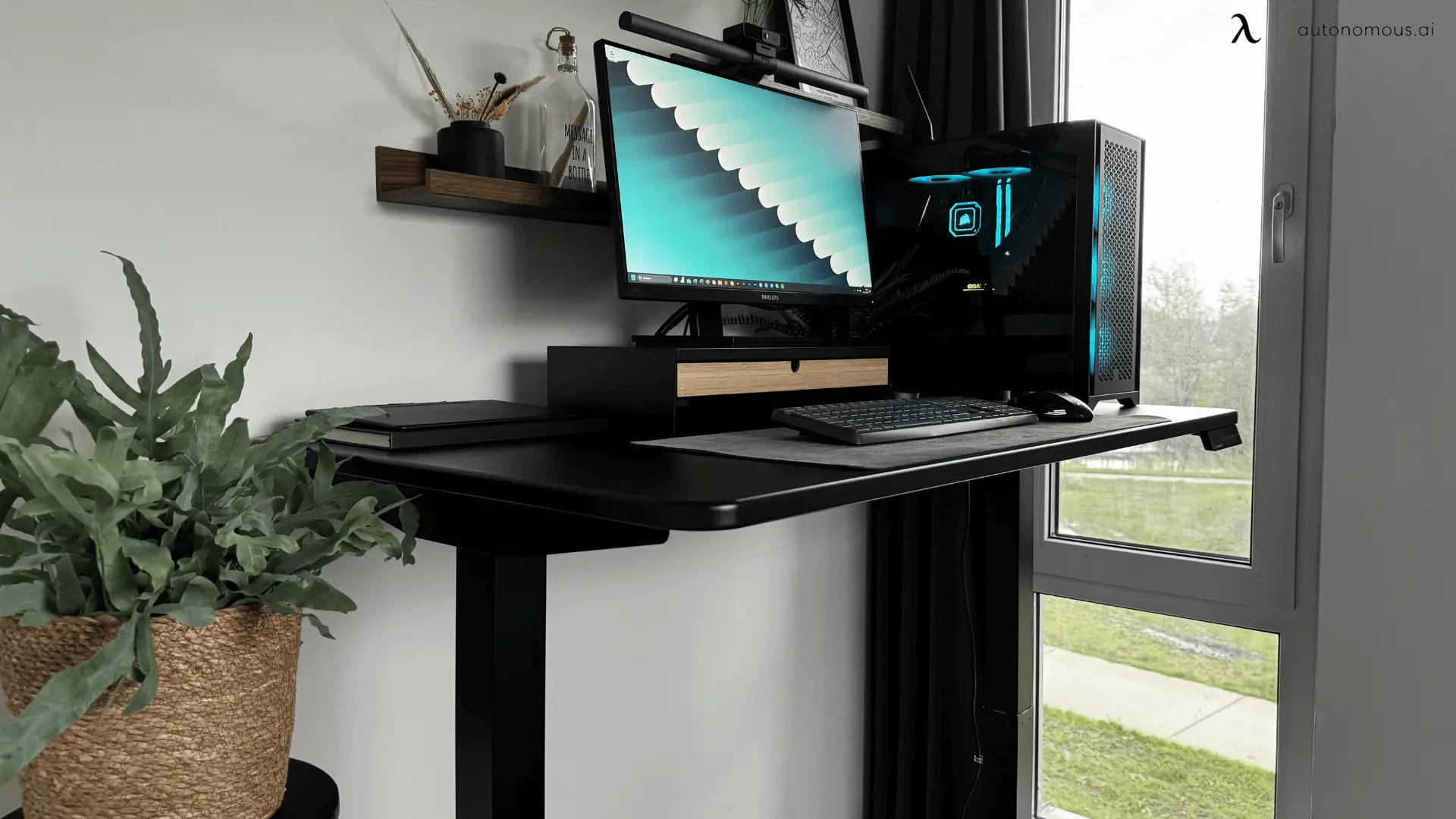
Whether used at home or in an office, the SmartDesk 2 is an excellent choice for anyone looking to incorporate more standing into their workday.
Autonomous SmartDesk 2 L-Shaped
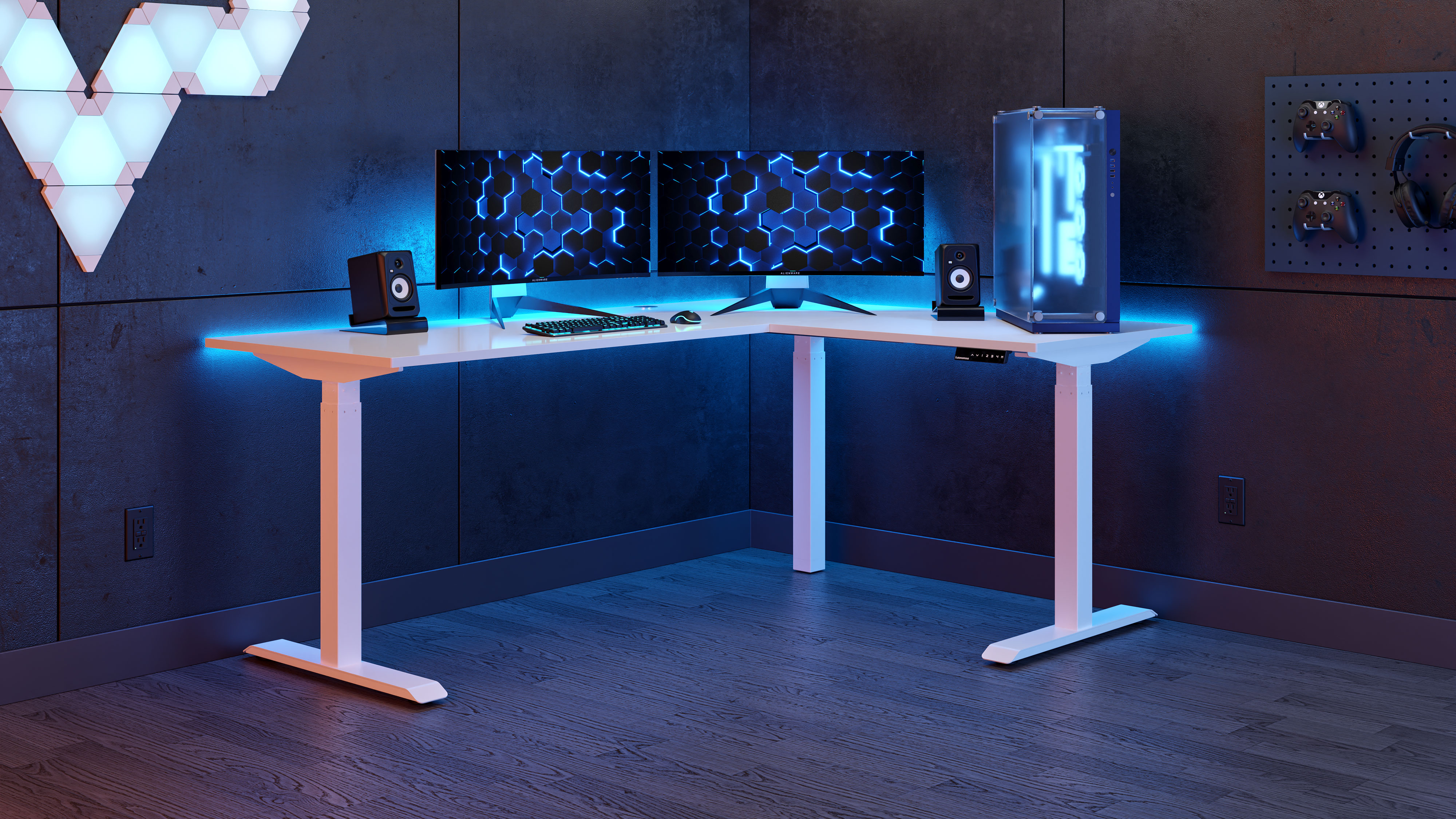
SmartDesk 2 L-Shaped
| Dimensions | Full: 77”L x 64”W x 1”H Large Top: 77”L x 29”W x 1”H Small Top: 29”L x 35”W x 1”H |
|---|---|
| Shipping Dimensions | 84"L x 35"W x 5"H x 95 lbs |
| Colors | White, Black, Walnut |
| Material | Warp-proof MDF wood |
| Motor type | Triple |
|---|---|
| Lifting speed | 2.3”/sec |
| Lifting capacity | 400 lbs |
| Noise level | 50 dB |
| Height range (without top) | 28.4" - 47" |
| Height range (with top) | 29.4" - 48" |
| Length range | 42” - 71” |
| Frame foot width | 27.5" |
| Material | SPCC steel |
| Colors | White/ Black |
| Outlet voltage | 110-240V |
| Anti - collision | Yes |
| Shipping Dimensions | Box 1: 54"L x 12"W x 8"H x 51 lbs Box 2: 35"L x 21"W x 9"H x 55 lbs |
| Pros | Cons |
| The L-shaped design offers extensive room for monitors, laptops, and other work essentials. | Larger size and weight may complicate the assembly process. |
| Triple motor system with a 400 lbs lifting capacity ensures strong, reliable operation. | |
| Operates at a low noise level of 50 dB, keeping your workspace serene. | |
| Easily switch the desk’s orientation to fit any workspace layout. | |
| SPCC steel frame with BIFMA certification provides long-lasting stability. | |
| Designed for quick assembly in just 15-30 minutes. | |
| Premium finish from White, Black, or Walnut, with warp-proof MDF wood tops. |
For those seeking more workspace, the Autonomous SmartDesk 2 L-Shaped offers both functionality and ample space. Ideal for multitaskers or individuals with multiple monitors, this desk provides an expansive surface area while still maintaining adjustable height features. The L-shaped design allows it to fit comfortably into corners, making it a space-saving choice for home or office use. It also supports up to 400 lbs, thanks to its triple motor system, making it a robust option for heavier setups.
Key Features:
- Triple motor for enhanced stability and support
- Adjustable height, ranging from 29.4" - 48"
- Supports up to 400 lbs
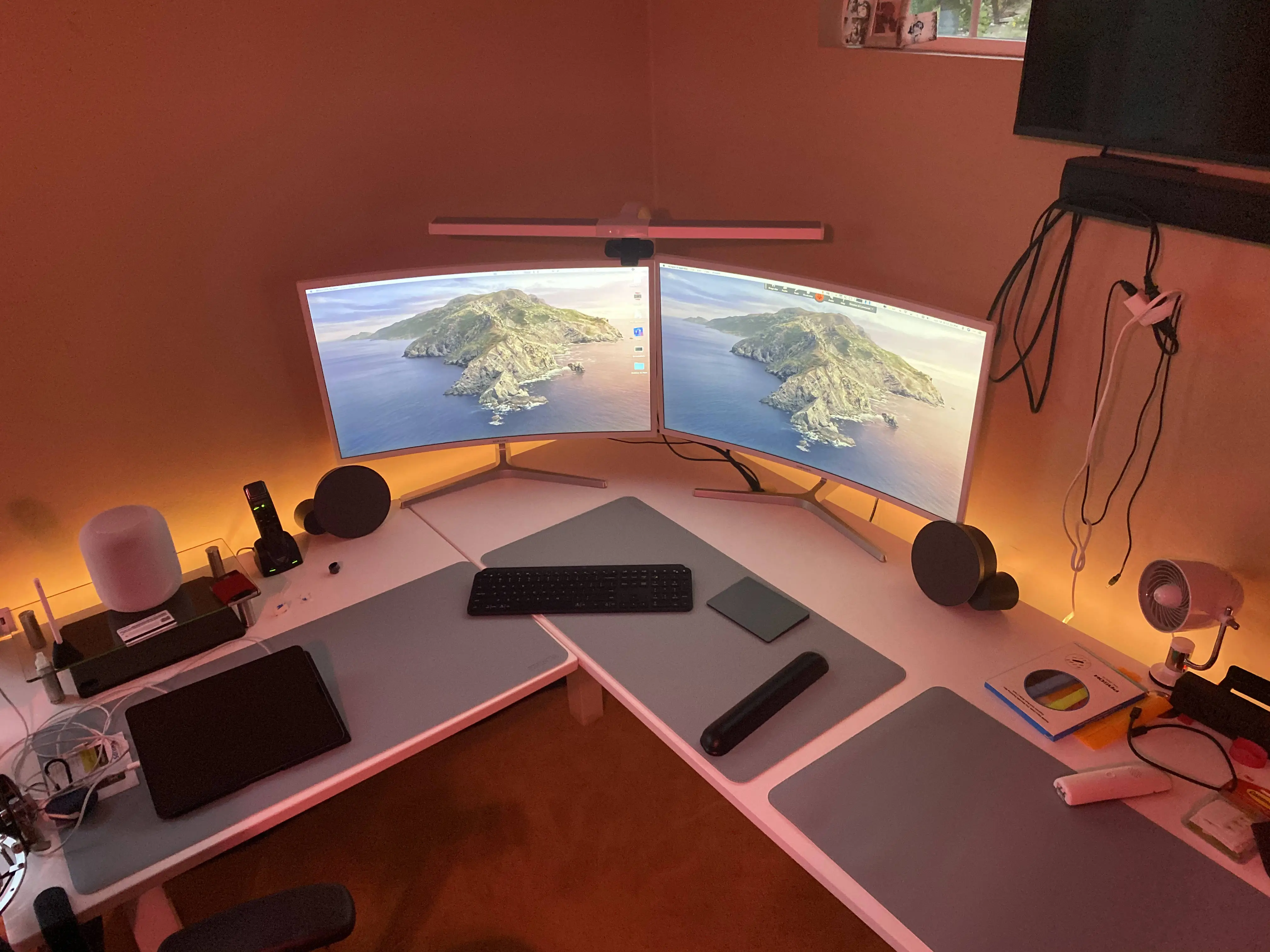


This L-shaped standing desk is ideal for professionals who need extra workspace and want to enjoy the benefits of standing while working. Its sturdy build and customizable settings make it an asset in any office setup.
Additional Tips for Standing at Work
Incorporating a standing desk is an excellent way to add more standing into your daily routine, but there are other tips to make the most of this change:
- Shift Weight Occasionally: Avoid standing in a fixed position for too long by shifting weight from one foot to the other. This improves circulation and reduces the risk of stiffness.
- Use Anti-Fatigue Mats: Standing on hard surfaces for long periods can lead to foot discomfort. Anti-fatigue mats provide cushioned support, making standing more comfortable.
- Incorporate Light Movement: Try gentle movements like calf raises, or march in place. These actions help engage muscles and promote circulation.
- Stretch Regularly: Stretching the legs, hips, and lower back while standing reduces muscle stiffness and supports flexibility.
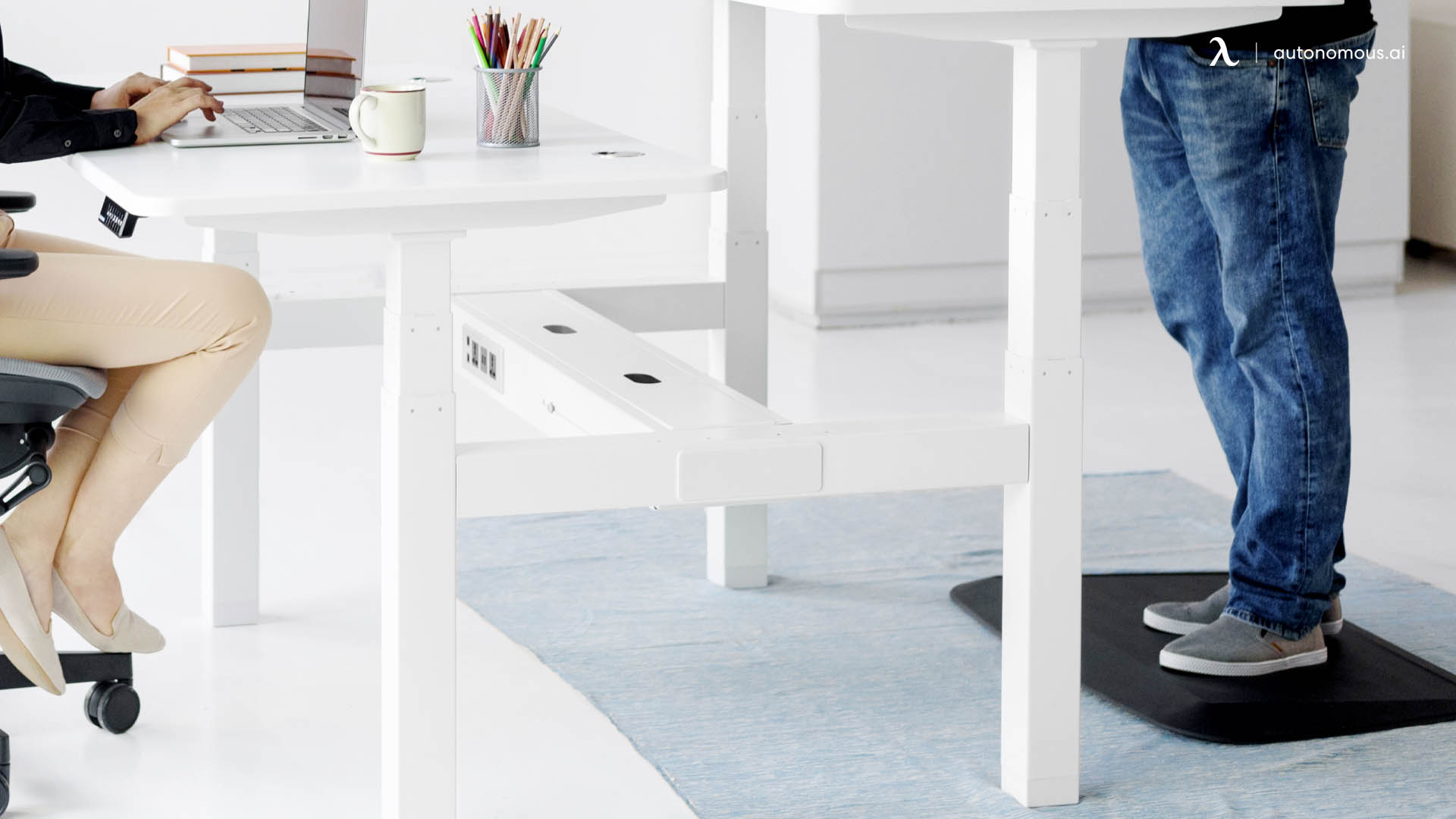
Summary
So, is standing an exercise? Or, is standing a workout? The answer is yes! Standing can be a great way to engage in low-impact exercise, improve balance and stability, and reduce the risk of chronic diseases. By incorporating standing into your daily routine, you can improve your overall health and wellbeing. Whether it's with a sit-stand desk or simply standing while you work, standing can be a simple yet effective way to improve your health.
For those seeking more ergonomic solutions for work, consider exploring options like the Autonomous SmartDesk 2 and Autonomous SmartDesk 2 L-Shaped for a healthier work environment. Standing more may not be a workout, but it’s a simple, accessible way to incorporate movement, stay active at work and maintain wellness every day.
Get exclusive rewards
for your first Autonomous blog subscription.
Spread the word
You May Also Like





-7512dd9e-3510-42ed-92df-b8d735ea14ce.svg)


